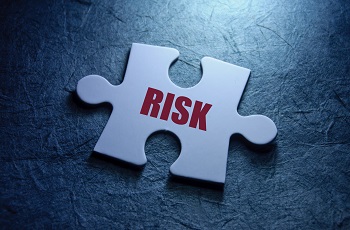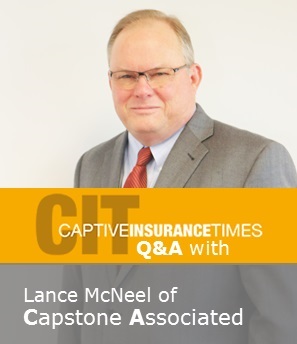 Captive insurance can help oil and gas companies to mitigate financial risk. Lance McNeel explains.
Captive insurance can help oil and gas companies to mitigate financial risk. Lance McNeel explains.
[Q] What can captives do for oil and gas companies?
Oil and gas companies have difficult risk exposures throughout their operations, and captives can provide tailored risk financing solutions. Captive insurance companies exist to insure the risks of their affiliated companies, providing for specific risk protections that may not be available or may be cost prohibitive in the conventional market.
[Q] The oil and gas sector has been hit hard by the price of oil. Would a captive help to mitigate this financial risk?
Yes. The price of oil is dependent upon a number of factors including market demand, the ability to develop oil resources domestically, socio-political conflict, etc. In general, normal market fluctuation that occur in most markets are not considered insurable risks. However, price fluctuations that are the result of fortuitous events such as natural disasters, trade disputes, wars and terrorism can be insurable in a dual trigger policy.
 The price of oil has repercussions on businesses that support oil & gas, such as businesses that develop valve equipment, Nitrogen supply and pressure pumping equipment, etc. Uninsured or under-insured oil and gas companies may feel compelled to terminate contracts with vendors if there is a decrease in demand. Additionally, business benefits such as the ability for the captive to provide secured loans back to the operating company could help businesses combat temporary cash flow shortages that could put the operations in peril, such as the inability to make payroll or the inability to purchase equipment.
The price of oil has repercussions on businesses that support oil & gas, such as businesses that develop valve equipment, Nitrogen supply and pressure pumping equipment, etc. Uninsured or under-insured oil and gas companies may feel compelled to terminate contracts with vendors if there is a decrease in demand. Additionally, business benefits such as the ability for the captive to provide secured loans back to the operating company could help businesses combat temporary cash flow shortages that could put the operations in peril, such as the inability to make payroll or the inability to purchase equipment.
Coverage for loss of a major customer is a type of specialized coverage that can be written under a captive insurance company. Others include loss of a major supplier, regulatory changes, loss of services, and expense reimbursement. Insurance coverages cannot prevent certain losses from occurring, but they can effectively counteract the financial and operational blowback of business interruption or extra expenses from a given event.
[Q] To what extent can oil and gas companies use captives to protect themselves against environmental claims?
In general, environmental costs are difficult to predict with certainty and given the exclusionary nature of current-day environmental insurance coverages in the commercial market, it is difficult for many business owners to hone in on a policy that will meet all of their coverage needs. If there has been an objective, in-depth feasibility study conducted on the premises of a business, and risks/premium levels have been determined, coverages written through a captive can cover these exposures, as they are tailored to the unique needs of the associated company. This feasibility study as the first step in designing captive coverages is critical to controlling losses by reducing the effects of a serious environmental claim and providing risk financing. A well-designed captive will include an on-site assessment of risks, an environmental risk analysis, and consequently, insurance coverages that directly address the pollution or environmental risks that exist within the business.
If wastes are mishandled, a pollution incident could occur resulting in significant damage, injuries, cleanup costs, and fines. Preempting these risks with the right safety protocols, and securing funding for possible losses through a captive are direct and proactive approaches to protecting against environmental claims.
[Q] What about small to middle market oil and gas companies. Can they benefit more from forming a captive?
Yes. More than 20,000 small and midsized closely-held firms operate under the “oil and gas” umbrella—all are looking for ways to mitigate the loss in revenue due to the volatile market. Risk affects every sector of the industry and coverages written through captives provide for tailored policies that may not be available in the conventional market.
Oil field services, equipment rental companies, gas and electric/utilities, pipelines, ship yards, water and sewer services, etc. can be affected by a wide array of difficult risks. Coverage written through a captive ensures that funds will be available for losses resulting from risks that have been identified and insured through well-designed manuscript policies.
The big publicly-traded energy service companies such as Baker Hughes, Halliburton, and Schlumberger have laid off more than 20,000 workers in the wake of the industry slowdown. This doesn’t address the fallout experienced by middle market companies supporting the industry. Siemens has cut 13,000 jobs and more than 1,100 drillings rig projects have been stalled. State legislators in North Dakota project that oil and gas tax revenues will drop over $4 billion over the next two years because of sagging crude prices.
With a captive insurance arrangement, these companies have the potential to bounce back more quickly, limit (or even completely avoid) layoffs/restructuring, and provide a level of asset protection. Even under favorable loss conditions, captive insurers can potentially leverage secured lending activity to reinvest in the business. Captives are a powerful risk management tool for the middle market oil and gas organizations, proven by their ability to stifle the rippling effect of political risks and violence in the critical oil-rich countries of the Middle East.
Written by Lance McNeel, CPCU, ARM, Vice President of Business Development, Capstone Associated Services, Ltd.
Download a pdf copy of this article here.




